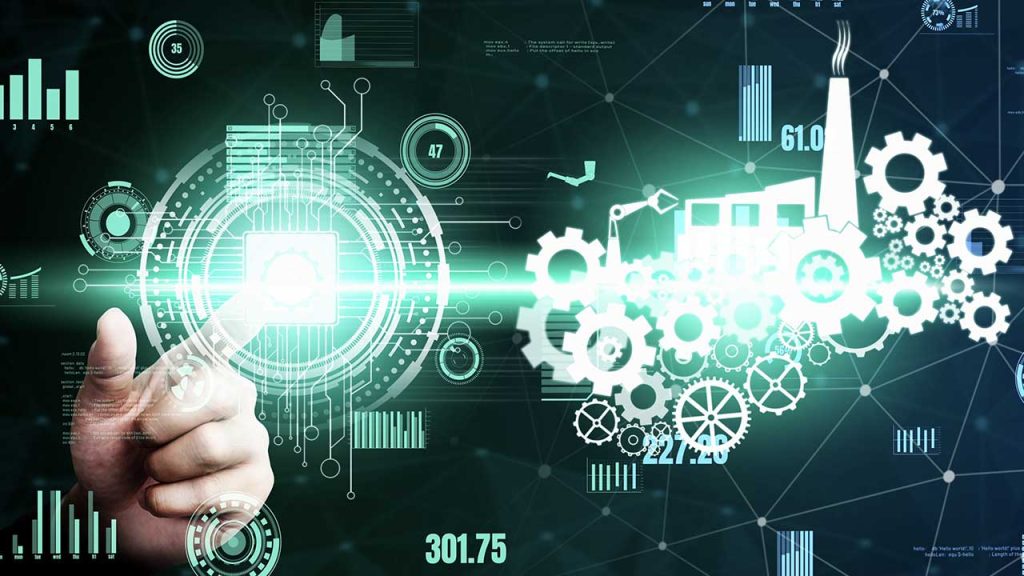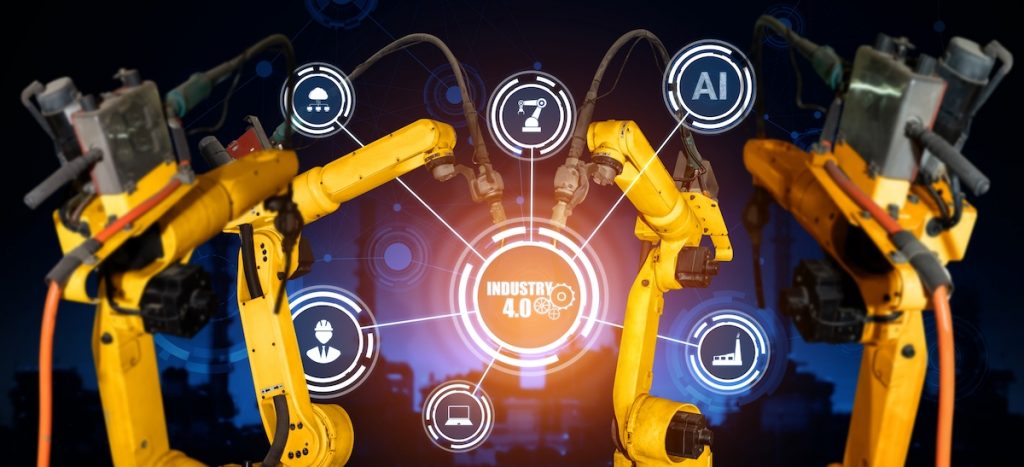Susan Peterson: “Concepts like Future of Work are at the center of the Digital Revolution”
One in five power plants will become digital plants by 2025, a Capgemini’s report predicts. Back in 2016, the maturity of digital initiatives in the industry varied: from projects that were leveraging advanced analytics to optimize assets; and the widespread implementation of smart meters; to early moves by some utilities to manage and integrate distributed generation resources, according to a report published by WEF in collaboration with Accenture. In this interview, Susan Peterson, Digital Lead, ABB Power Generation & Water, answers IIoT World’s Co-founder questions related to the digital revolution in power generation and water industries.
Carolina Rudinschi: Many utilities – especially big companies – see the digital revolution as a threat to their business model, but there are also massive opportunities to be seized. How can ABB help these companies keep up with digital innovation and capitalize on the many opportunities opening up?
Susan Peterson: We believe that human expertise will remain at the core of this new, more connected and digital world. Connected devices will enable new service models. Despite extensive automation, utilities will continue to rely on human collaboration and expertise. For ABB this means a significant focus on customer-led solution development. Our customers in the power and water industries are going through a significant transformation right now, so we think that focusing on their user experience and how digital will change how they work is very important. We believe that concepts like Future of Work are at the center of the digital revolution.
Further reading: Biggest Challenges Facing Water Industry
To keep up with the speed of innovation, our ABB Ability™ team has developed a platform and applications that enable solutions across multiple industries. By using a common technology platform that delivers solutions on-site, in the cloud and between clouds, customers can choose the deployment model that they prefer. Because we’ve used industry leading technologies in building the ABB Ability platform, customers benefit from an entire ecosystem of technology innovation and resources.
In line with our Chief Digital Officer’s vision, ABB’s mission is to help customers grow and accelerate real gains from IIoT, to provide easier, more digestible options to enable new business models, ways of working and emergent business needs.
Carolina Rudinschi: The utility of the future will operate in an entirely digital system. How hard is it to adapt all the infrastructure to get there?
Susan Peterson: Though the enthusiasm for digitalization in the utility sector is noteworthy and promising, many power and water companies are just beginning to see benefits from their digital initiatives. To date, a lot of investment has been made on gathering data from silos, cleaning and normalizing the data and, in many cases, creating a view of plant or fleet performance and KPIs. According to a recent Capgemini study, only 8 percent of utilities’ operations are digitally mature. There are many opportunities and we advocate starting with small tangible wins where value can be proved and scaled. This approach not only drives financial benefits, but makes key stakeholders within a company’s digital initiative more confident and perhaps bolder to take on larger initiatives (Capgemini Worldwide, “The Digital Utility Plant: Unlocking value from the digitization of production”).
The LNS Research Digital Transformation Framework is an excellent model for companies to consider on their digital journey. The model starts by aligning strategic objectives to the proposed project, then moves to a comprehensive mapping of direct and indirect stakeholder requirements. From there an operational architecture is created, which in the power and water industries would go from device level to enterprise level – such an approach is critical for IT, security and operations. Ultimately, a business case is developed that can be used as a success criterion for any proof of concept exercises.
How hard is it to adopt a digital infrastructure? ABB sees automation as an enabler. Power generation is one of the most automated industries today. This infrastructure is the foundation of the digital transformation process. While we are aware of economic, regulatory and societal challenges, companies that find and define their business case for strategic digital initiatives will be well positioned to make the move quickly and benefit the most.
We are at the beginning of a massive transformation in the power generation industry over the next 1-3 years. IDC FutureScape predicts that by 2019, 25 percent of the top 100 utilities will cut their IT costs by at least 30 percent by migrating IT infrastructure into the public cloud. By 2020, IDC predicts that 25 percent of utilities will incorporate performance management investments with sensor data and cognitive capabilities to improve asset efficiency and reduce maintenance costs.
Carolina Rudinschi: What are the most exciting projects you are working on?
Susan Peterson: It is hard not to get excited about digital twins when deployed throughout a plant’s life cycle, from the design process to maintenance and operations. I loved hearing from a customer who told me that project design teams, who were just starting digital twin technology, provided unsolicited feedback that the technology made design reviews and working with third parties easier and reduced parts of the design process from weeks to hours.
The other piece that I am really excited about is how digital can break functional silos. We have customers that are working to deploy digital solutions to create one version of truth around asset capability between generation and trading. This will not only make everyone’s job easier, but will also lead to more profitable dispatch and trading decisions with better data.
Carolina Rudinschi: While some power companies may think they are already using data analytics efficiently, only 2 percent of data is captured in the energy sector, and what is captured is not through automation. Why?
Susan Peterson: We have to acknowledge that getting to the point where insights can be gained takes work. For companies that have not done so already, getting the data into a single place, ensuring that the data is clean (in terms of meter drift or variances in underlying tags) and having a common understanding of what data means, likely through a data dictionary, are essential but time-consuming tasks. The returns from having a single version of truth across a company are many, but it takes effort. I worked at a company that made this effort for a fleet of approximately 20 gigawatts and we stumbled a few times because we underestimated the importance of the foundational work.
Carolina Rudinschi: What are the new frontiers of digital transformation in the power industry?
Susan Peterson: Just like in the 1990s when new players came into the power market as independent power producers, we are seeing new market participants that are aggregating renewable generation to trade in wholesale power markets. We are also seeing industrials and cities acting as their own power supplier. IDC believes that by 2020, non-utility companies and digital disrupters (think Airbnb or Amazon) will grab 20 percent of the energy retail market. We are approaching the moment in IIoT where everyone will understand its value.
We will see new opportunities in decentralized generation. Today, almost 60 percent of utility executives in 20 countries rank distributed generation as the biggest disrupter to their operations, according to a 2017 survey by Accenture, the global services company. By 2019, IDC predicts 30 percent of utilities will learn how to integrate externally originated asset, market and grid data and will invest in distributed energy resource management systems.
Virtual power plants, also known as virtual power pools, are a proven way to harness the advantages of multi-unit distributed generation. They do so across an impressive range of applications which enable:
- utilities and distributed energy companies to seamlessly integrate, optimize and trade production from thousands of small-scale generators across large geographic areas;
- municipal utilities to balance production with consumption in diverse, multi-source energy systems by utilizing day-ahead and intra-day planning;
- microgrids to integrate more renewables and minimize their use of costly, CO2-emitting fossil fuel, without risk to grid stability and reliability;
- industries to cut their energy costs by 5-10 percent without impacting production volumes and delivery commitments; and
- conventional multi-unit power plants to optimize production and respond quickly and flexibly to market requirements by operating internally as a virtual power pool.
The Future of Work is another important new frontier. Traditionally, power and water sector employees worked in utilities that had strong structural incentives, like pensions, for long-term employment. We have already seen some significant increases in workforce mobility and we expect knowledge sharing and virtual collaboration to grow in importance. In a recent conversation with Ameren, a Midwest US utility, their latest digital focus is on knowledge transfer to harness the experiences and daily unwritten procedures of thousands of employees. Ameren is researching methods of digital onboarding, video-based recording to facilitate knowledge transfer, and using work social networks like Yammer and Workplace. With a digital knowledge transfer system, Ameren hopes to overcome workforce shortages, maintain a consistent if not improved level of expertise, and recruit and retain employees in the digital era. According to LNS Research, “another key to successful digital transformation is to create an environment in which the next generation of workers will be more than just capable – organizations must digitally empower them to be proactive contributors to the success of the business.”
Carolina Rudinschi: What are the biggest challenges utilities face in the process of digitalization?
Susan Peterson: One of our biggest challenges is to make sure we bring everyone along on this digital journey. In a recent white paper by Mercer, the global management consulting firm, “technology organizations are now gripped with urgency to translate these incredible shifts into market advantage by transforming the way they work, manage and deliver value to their stakeholders.” As part of the World Economic Forum’s recent The Future of Jobs report, only about half (53 percent) of industry executives surveyed said that were confident in their ability to embrace and prepare for the disruptive changes in the workplace. The main obstacles were a lack of understanding of the disruptive changes ahead, resource and financial pressures, and lack of alignment between their workforce and innovation strategies.
Lastly, in a study by McKinsey, digital transformations need to focus on key action areas, one of which includes organization and culture. Engineering teams must learn a new way of working more freely, unlike conventional engineering. In the design phase, agility, according to McKinsey, is most beneficial to digital success, based on a “culture of sharing”, open communication and support from top management. Learning a new way to work and brainstorm offers a rare opportunity for companies to rebuild processes and procedures.
So, my conclusion is that companies must ensure that all its people are included in the digital transformation. No stakeholder should be excluded from the digital journey the company has embarked upon.
Find out top research interests of World’s Top 500 IoT Scholars.



